New
World Vitiligo Day 2026 – A Historic Return to the Movement's Spiritual Birthplace
Chandigarh, India – From Stigma to Strength
World Vitiligo Day 2026 marks a powerful return to the movement’s roots. On June 25, the global vitiligo community will come together in Chandigarh, India, under the honorary leadership of Prof. Davinder Parsad.
For the first time, World Vitiligo Day will join forces with a regional meeting of the International Society of Dermatology (ISD). This landmark collaboration brings together grassroots advocacy and cutting-edge medical science — elevating both the human and clinical sides of vitiligo care.
A City of Transformation and Intention
Chandigarh represents far more than a symbolic venue choice — it embodies the very essence of transformation that defines the vitiligo community's journey. As India's first planned city, Chandigarh was conceived by Prime Minister Jawaharlal Nehru as "a new city, a symbol of India's freedom" following the 1947 partition. Designed by legendary architect Le Corbusier between 1951-1962, the city stands as a masterpiece of modernist urban planning and architectural innovation (Wikipedia).
The city's name itself carries profound spiritual significance — "Chandigarh" translates to "fortress of Chandi," referencing the fierce goddess Chandi, a manifestation of Shakti, the divine feminine energy. This transformative energy permeates the region through numerous Shakti temples, particularly Mata Mansa Devi temple, where pilgrims tie sacred threads hoping their deepest wishes will manifest (Wikipedia). The temple, situated in the Shivalik foothills and dedicated to the goddess Mansa Devi — a form of Shakti — serves as one of North India's prominent spiritual centers, drawing millions of devotees during the biannual Navratra festivals.
Architectural Symbolism Mirrors the Vitiligo Mission
Perhaps no structure embodies the World Vitiligo Day mission more perfectly than Chandigarh's iconic Open Hand Monument. Designed by Le Corbusier and standing 26 meters high, this rotating sculpture symbolizes "the hand to give and the hand to take; peace and prosperity, and the unity of mankind" (Wikipedia). Le Corbusier described his Open Hand as a symbol of "peace and reconciliation," representing an idea that "is open to give and open to receive". This philosophy directly mirrors World Vitiligo Day's rally theme of "Many Shades, One Voice" — embracing diversity while creating unity through shared understanding and support.
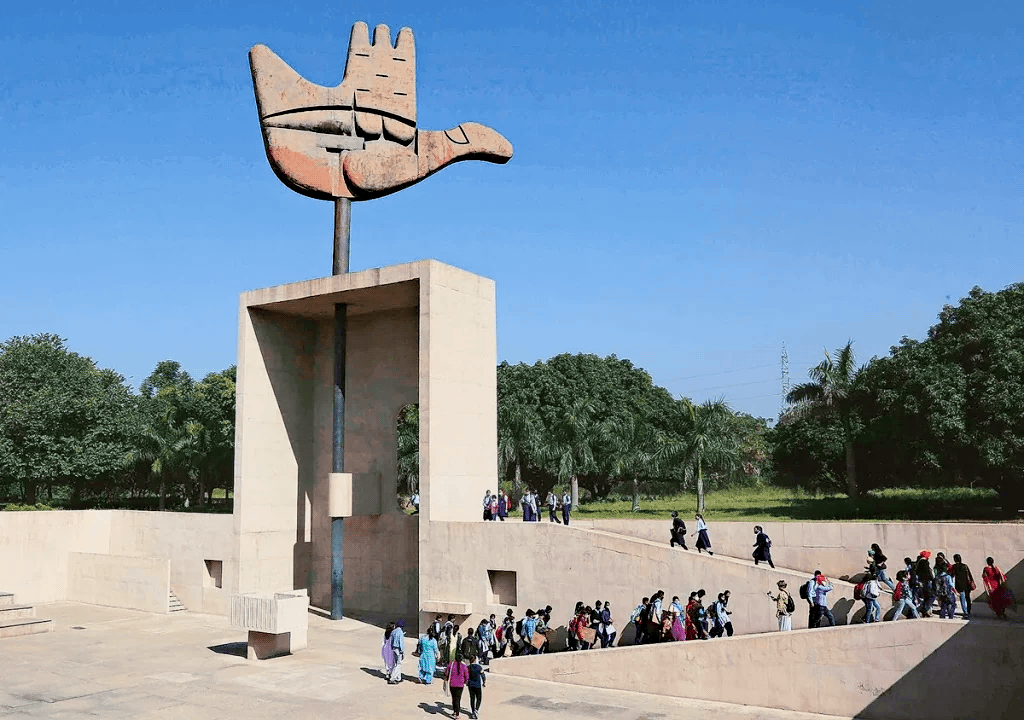
The Capitol Complex itself, recognized as a UNESCO World Heritage Site since 2016, represents one of the largest monumental complexes designed by Le Corbusier. The complex features three main democratic pillars — the Palace of Assembly, the Secretariat, and the High Court — along with several monuments including the Open Hand, all set against the backdrop of the Himalayan Shivalik hills. This architectural achievement celebrates independence while simultaneously opening toward freedom and modernity — themes that resonate deeply with the vitiligo community's journey from stigma to empowerment.
Prof. Davinder Parsad: A Visionary Leader Returns
The selection of Prof. Davinder Parsad as honorary president brings the World Vitiligo Day movement full circle to its Indian roots. Prof. Parsad, a leading authority in vitiligo research at the Postgraduate Institute of Medical Education & Research (PGIMER) in Chandigarh, has dedicated over 25 years to vitiligo research and treatment. His remarkable academic output includes more than 330 publications in indexed journals, with many appearing in top-tier dermatology publications such as JAMA Dermatology, Journal of American Academy of Dermatology, and British Journal of Dermatology.
Prof. Parsad played a historical role in World Vitiligo Day's development. In early 2015, he successfully united three major Indian dermatological societies — the Indian Association of Dermatologists, Venereologists and Leprologists (IADVL), the Indian Society of Pediatric Dermatology (ISPD), and the Pigmentary Disorders Society (PDS) — to embrace the global June 25 celebration, transitioning from India's original May 19 observance.
His research has reshaped vitiligo treatment — from pioneering non-cultured epidermal cell suspension (NCES) as a first-line surgical option for stable cases, to advancing combination therapies that now define the standard of care. As the founding secretary and former president of the Asian Society for Pigment Cell Research (ASPCR), Prof. Parsad has been a driving force in both scientific innovation and patient advocacy.
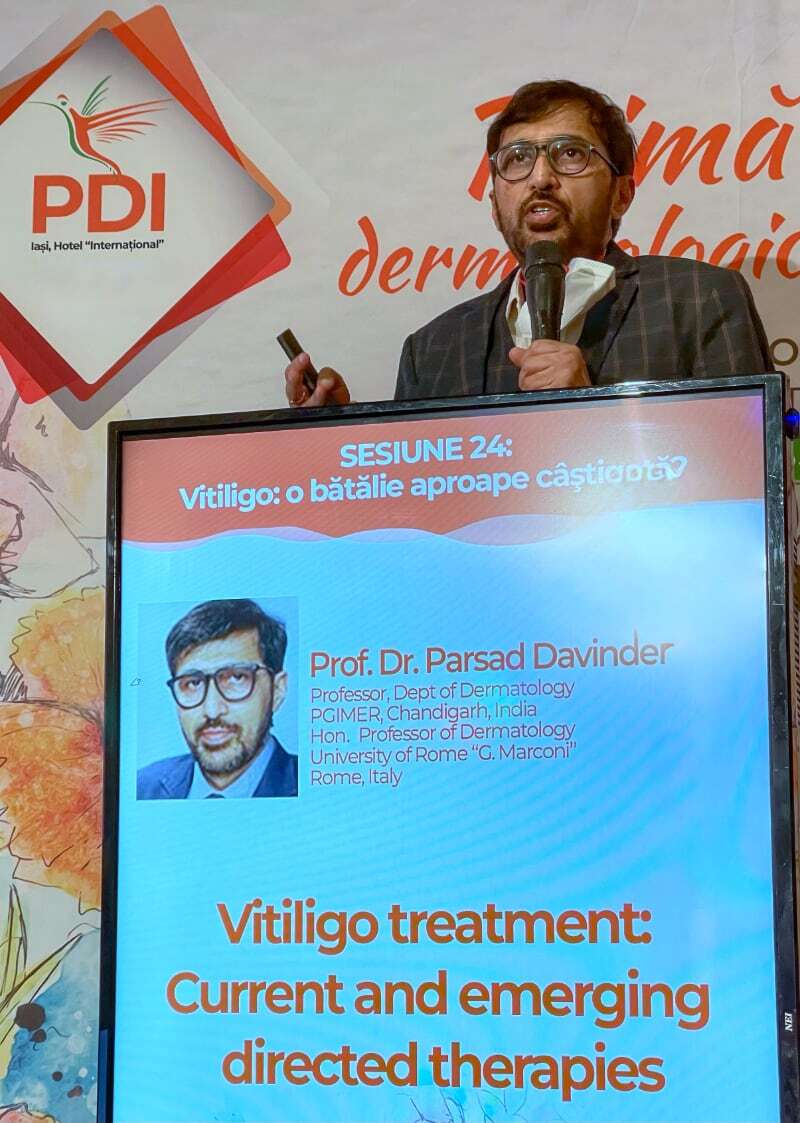
A Historic Milestone in Medical Advocacy
The 2014 World Vitiligo Day celebration in Chandigarh, under the leadership of Prof. Davinder Parsad, set a bold precedent that still inspires the movement today. That morning, over 800 doctors gathered at PGIMER to exchange practical insights and provide free consultations to 225 vitiligo patients. Industry professionals joined the session as well, adding momentum to an already unprecedented turnout.
Later that day, the city came alive. A vibrant parade of 40 World Vitiligo Day–branded rickshaws rolled out from PGIMER, launching a city-wide celebration that featured street performers, educational talks, theatrical performances, and screenings across Chandigarh’s iconic sectors.
It was a masterclass in coordinated impact — blending clinical care and public engagement to create lasting visibility. And nearly a decade later, its records still stand.
Building on Unprecedented Global Momentum
World Vitiligo Day 2026 builds on the record-breaking momentum of the 2025 Toronto Innovation Summit, — an event that took global reach to a whole new level. Held under the theme “Innovation for Every Skin, Powered by AI,” the Toronto campaign reached an estimated 60 million unique users on June 25, 2025 alone, with total campaign impressions soaring between 120-150 million. The summit spotlighted breakthrough uses of artificial intelligence in vitiligo care — from faster, more accurate diagnosis to smarter treatment management and relapse prediction. The Skinopathy Vitiligo App for example, demonstrated how AI could shave eight months off diagnosis time in Canada, while improving diagnostic accuracy to 86% from 72% by human doctors.
Toronto’s innovations — including early detection tools, personalized treatment trackers, and predictive relapse analytics — laid the groundwork for a new era of evidence-based care. Chandigarh 2026 picks up that torch, aiming to match tech-driven progress with grassroots advocacy, returning the movement to its spiritual home.
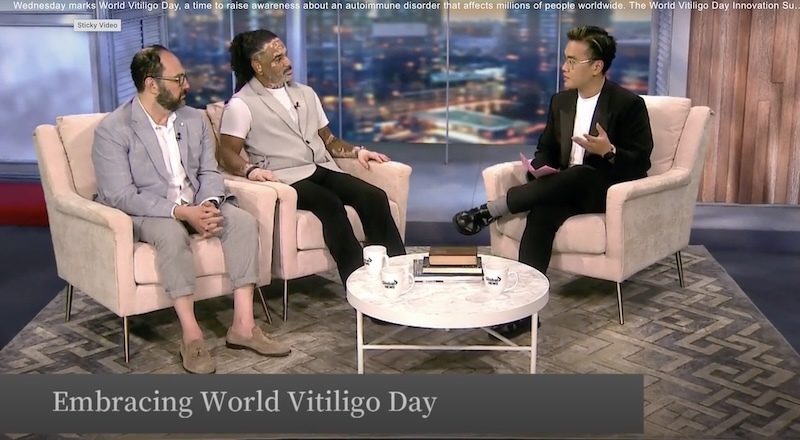
Global Health Challenge: Higher Global and Indian Prevalence Confirmed
The scientific rationale for continued vitiligo advocacy remains compelling. While a recent systematic review estimated global vitiligo prevalence at 0.36%, there is stronger consensus among researchers that vitiligo affects approximately 1% of the global population. This higher figure, supported by multiple clinical databases and meta-analyses, points to over 80 million people worldwide.
Major methodological challenges in epidemiology — such as underdiagnosis, limited dermatological access, and inconsistent diagnostic criteria — contribute to the uncertainty. Studies indicate that up to 40% of adults with vitiligo may remain undiagnosed, especially in non-White populations and regions with limited specialist care.
India shows the highest vitiligo prevalence globally, with a nationwide multicentric study reporting 0.89%, yet regional surveys found rates as high as 8.8% in Gujarat and Rajasthan states.
Across India, prevalence varies: hospital-based studies range from 0.43% to 9.98%, with a national mean of 2.96%. Higher rates are seen among females (0.93%) compared to males (0.86%), with notable variation between regions and states. Family clustering is significant, with up to 40% reporting a positive family history.
These numbers confirm India's status as both the world's epicenter for vitiligo prevalence and impact, due to genetic, cultural, and health access factors. Chandigarh — the site of World Vitiligo Day 2026 — stands at the heart of this landscape, underscoring India’s central role in the global fight against vitiligo.
The Convergence with International Society of Dermatology
The merger with an ISD regional meeting represents a strategic evolution in World Vitiligo Day's approach, combining patient advocacy with professional medical education. The ISD, dedicated to improving dermatological care through knowledge sharing and global collaboration, regularly supports regional meetings worldwide and participates in major international conferences. This partnership ensures that WVD 2026 will advance both patient empowerment and clinical excellence simultaneously.
The ISD's Global Education Awards program, which supports dermatology residents and young professionals to present at international venues, aligns perfectly with World Vitiligo Day's mission of global knowledge dissemination. This collaboration promises to create new pathways for emerging dermatologists to engage with vitiligo research and patient care.
Theme: "From Stigma to Strength" with rally slogan "Many Shades, One Voice"
The 2026 theme reflects the vitiligo community’s ongoing transformation — from isolation to empowerment — while still confronting the very real challenges of stigma and misunderstanding.
Research shows the toll runs deep: two-thirds of patients report mental health impacts, and 8 in 10 say vitiligo affects how they feel about their appearance. Only 15% feel adequately informed at the time of diagnosis, and a third leave those early consultations feeling confused or dismissed.
The rallying cry “Many Shades, One Voice” captures the heart of the movement — unity without uniformity. It celebrates the many ways vitiligo shows up, not just on skin, but across lives, cultures, and communities. It’s a call to embrace the full spectrum of experience and stand stronger together.
Innovation Preview: Beyond the AI Revolution
While details are still under wraps, WVD 2026 is set to unveil a “game-changing, India-scale innovation” — one designed to go beyond even the groundbreaking AI breakthroughs of Toronto 2025. This next-generation platform aims to transform how the global vitiligo community connects, learns, and receives support — hinting at a comprehensive ecosystem for care, education, and empowerment.
With India’s leadership in digital health and Prof. Parsad’s vast research network, this innovation promises to fuse clinical expertise, cutting-edge tech, and deep community engagement — at a scale the vitiligo world hasn’t seen before.
Global Reach and Engagement Strategy
WVD 2026 aims to reach nearly 100 million people worldwide — an ambitious goal built on the movement’s growing momentum. Since its modest preview in Lagos, Nigeria, in 2011, World Vitiligo Day has evolved into one of the world’s largest and most impactful grassroots health awareness campaigns.
Its success lies in a hybrid model: decentralized local action supported by a shared global strategy. This approach has consistently delivered both widespread media attention and meaningful engagement with patients and healthcare providers alike.
The Chandigarh campaign will build on that foundation. By combining traditional media partnerships with digital platforms — and drawing on India’s vast population, tech infrastructure, and growing influence in global healthcare — WVD 2026 is set to achieve an unprecedented level of global reach and resonance.
A Movement Returning to Its Roots
World Vitiligo Day’s return to India is more than symbolic — it’s a recognition of the country’s foundational role in shaping the global movement. From 2009 to 2015, Prof. Savita Malhotra’s National Vitiligo Day celebrations laid the groundwork for organized advocacy, while Prof. Davinder Parsad’s efforts to unite India’s leading dermatological societies showed how professional institutions could champion patient-centered care.
Chandigarh, in particular, holds deep significance. The 2014 celebration not only broke records for physician participation and patient consultations — it proved that clinical excellence and public engagement could go hand in hand. Those benchmarks continue to inspire World Vitiligo Day organizers around the world.
Building Bridges Between Science and Advocacy
The partnership with the ISD regional meeting marks a turning point in World Vitiligo Day’s evolution — from a global awareness campaign to a full-spectrum initiative aimed at improving healthcare outcomes. It reflects a growing understanding that true advocacy doesn’t run parallel to medicine; it works in partnership with it.
Prof. Parsad embodies that bridge. His leadership carries weight among both patients seeking evidence-based hope and clinicians looking for patient-centered research priorities. With a prolific scientific record and a long-standing role in WVD’s growth, he is uniquely positioned to unite scientific rigor with community-driven purpose.
Conclusion: Transformation Built Into the Foundation
World Vitiligo Day 2026 in Chandigarh brings together history, medicine, architecture, and spirit in a setting that reflects the vitiligo journey itself — from stigma to strength. A city built on the ideals of independence and progress, and rooted in spiritual energy, Chandigarh is the perfect place to mark this next chapter.
Led by Prof. Davinder Parsad, in partnership with the International Society of Dermatology, WVD 2026 is set to raise the bar for global advocacy. Its rally slogan — “Many Shades, One Voice” — speaks to unity through diversity, much like the city’s iconic Open Hand Monument, always open to change.
With innovation on the horizon and the global community coming together, this year’s gathering promises not just awareness, but real, lasting impact for the 100 million people living with vitiligo.
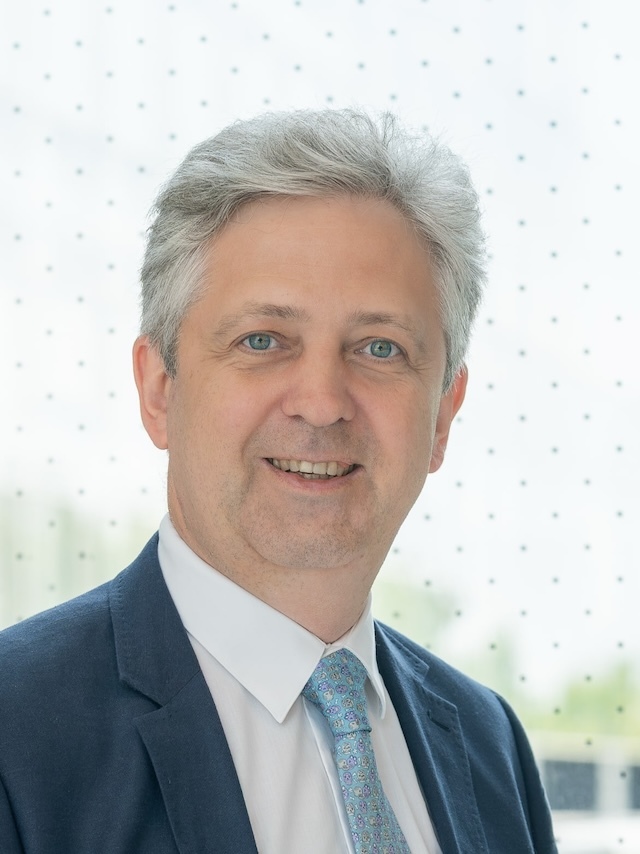
Yan Valle
Professor h.c., CEO VR Foundation | Author A No-Nonsense Guide To Vitiligo
Read more:
- History Of The World Vitiligo Day
- World Vitiligo Day 2014 in Chandigarh, India
- World Vitiligo Day 2025 Media Stats: 60M+ screens
Listen to Deep Dive in Vitiligo podcast
- World Vitiligo Day Goes Supersonic in Purple (Ep. 39)
- How World Vitiligo Day Reached 60+ Million People in 24 Hours (Ep. 38)
- World Vitiligo Day: Redefining the Future of Dermatology (Ep. 36)
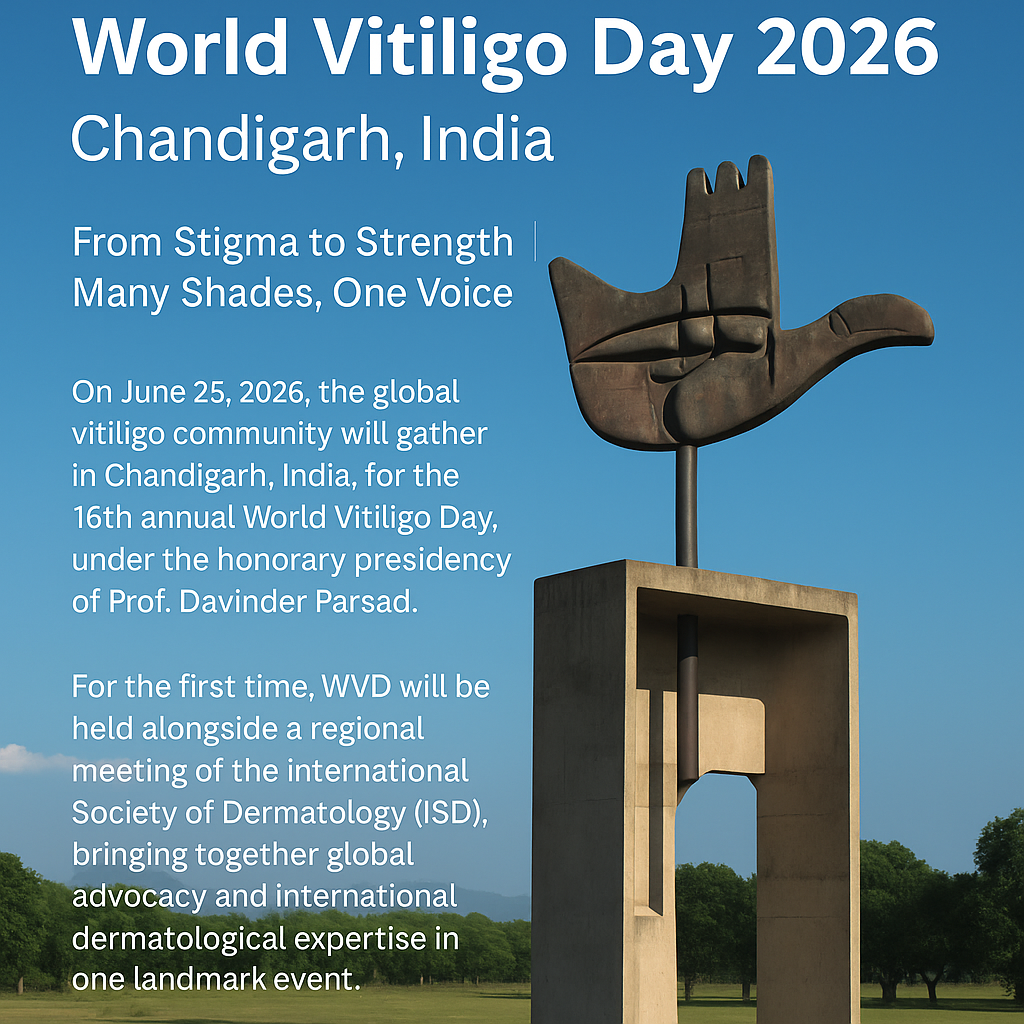
FAQOther Questions
- Isn't it just a cosmetic disorder?
Contrary to popular belief, vitiligo is not merely a cosmetic issue but a complex autoimmune disorder that affects the body’s largest organ—along with other vital systems—and is...
- Who is prone to vitiligo?
Vitiligo can affect anyone, regardless of gender, age, or race. Vitiligo prevalence is between 0.76% and 1.11% of the U.S. population, including around 40% of those with the con...
- Vitiligo and Pregnancy
Pregnancy with vitiligo? The good news: vitiligo itself doesn’t make pregnancy unsafe. Most women stay stable (some even improve), though flares can pop up after birth — usually...
Though it is not always easy to treat vitiligo, there is much to be gained by clearly understanding the diagnosis, the future implications, treatment options and their outcomes.
Many people deal with vitiligo while remaining in the public eye, maintaining a positive outlook, and having a successful career.
Copyright (C) Bodolóczki JúliaBy taking a little time to fill in the anonymous questionnaire, you can help researchers better understand and fight vitiligo.
